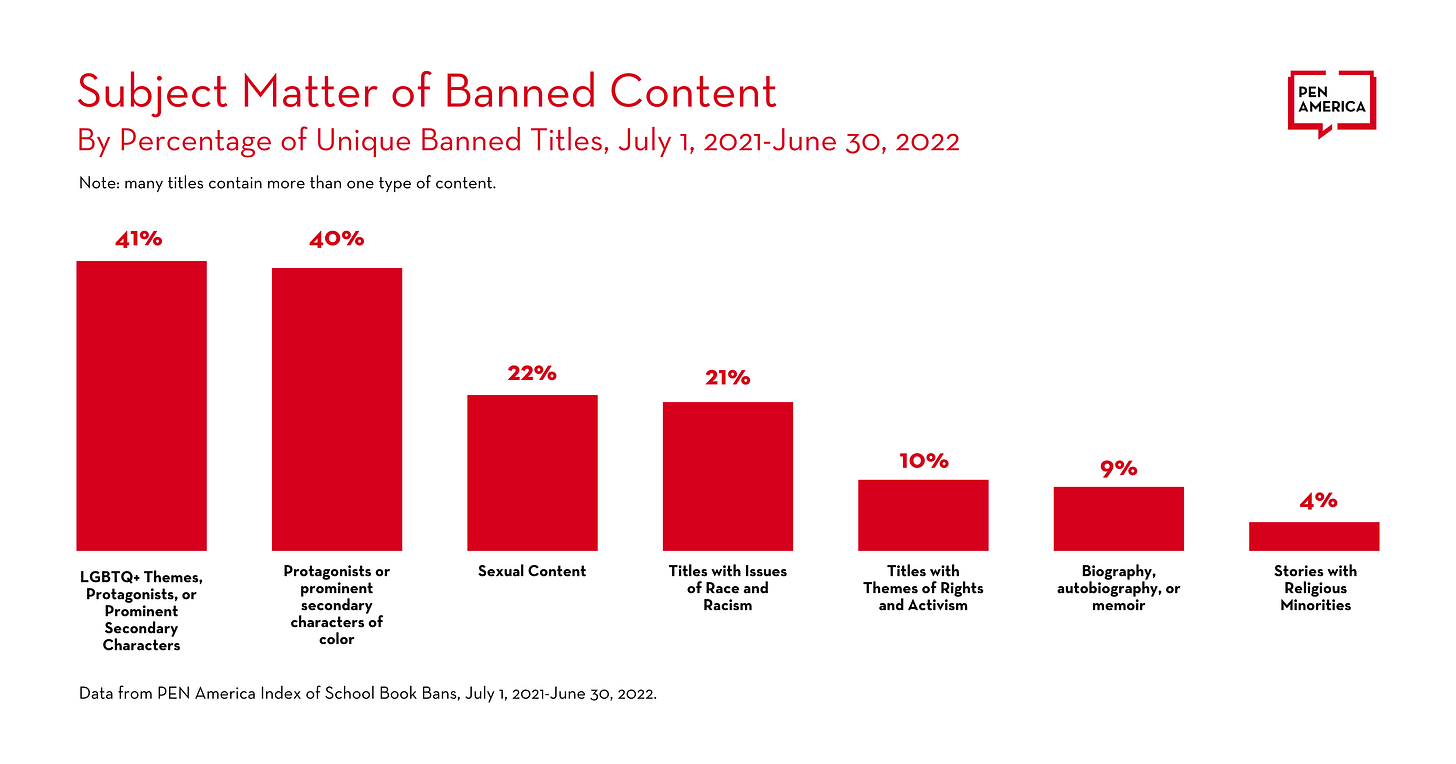So recently I was a little restless and bored and looked up Make Way on Amazon, and noticed a couple of reviews that referenced the author’s note in the back of the book. I mean, I know! I know it’s never a great idea to read the comments! But I did, and while the majority of reviews are lovely, there are a few that I have been turning over in my mind. (I’m not going to lie, part of me thought it would be hilarious to share quotes with fun rainbow graphics, like this person’s take on “furious men” who hated the Barbie movie! But I digress.) The two pieces of content all of these reviews took issue with—- a photo of Nancy Schön’s sculpture featuring the ducklings wearing Pride sweaters, and a paragraph that describes many of the ways that the ducklings have been dressed up1— are worth exploring a little further. I’ll quote my own paragraph from the author’s note of Make Way here:
It has also become a tradition to dress up Mrs. Mallard and her ducklings. They’ve worn everything from sports jerseys celebrating local Patriots and Red Sox teams to “Pilgrim”-style collars and hats, and even masks during the COVID-19 pandemic. Some outfits have been political statements, too: the statues have been dressed in pink hats, Black Lives Matter T-shirts, “Vote” sweaters on Election Day, and rainbow colors to celebrate Pride. One artist, Karyn Alzayer2, even placed metal cages over Mrs. Mallard and her ducklings in the middle of the night to protest family separations at the U.S.-Mexico border. Schön called the metal cages “brilliant,” stating that the ducks, like immigrant families, were “looking for a home.”
First things first: I know I’m not going to change anyone’s mind with this post. If someone didn’t like the book, that’s fine. Readers are entitled to their opinions. More importantly, I support LGBTQ rights. That’s not something I will equivocate on, in children’s books or anywhere else, ever. (Side note: The idea for Make Way came about at a gay wedding when one of the grooms, who’s originally from Russia, shared that there is a replica of the statue in Moscow’s Novodevichy Park!3) While I didn’t write the author’s note to Make Way with the intention of promoting a “liberal agenda,” I do not—- and never will—- regret including the picture of ducklings in Pride colors or the paragraph above, nor will I change them in future editions (as suggested by one reviewer). Writing about public art, and sharing, in a factual manner, how the public chooses to interact with that art, is one of the major points of Make Way. It’s an important thing for people to learn about. It speaks to why art, and public art in particular, matters. Public art is for all of us.
It’s been a challenging time for the arts, literature included. According to the American Library Association’s Office of Intellectual Freedom (OIF), 2022 saw the highest number of book challenges since the office started tracking censorship in libraries more than twenty years ago.

And, according to PEN America, works that featured LGBTQ characters or themes made up the majority of school book bans from July 2021 to June 2022.4

PEN America’s updated report on the 2022-2023 school year also notes:5
“book banners continue to target stories by and about people of color and LGBTQ+ individuals. In this six-month period, 30% of the unique titles banned are books about race, racism, or feature characters of color. Meanwhile, 26% of unique titles banned have LGBTQ+ characters or themes.”
Of the 874 unique titles included in PEN America’s report, “26% present LGBTQ+ characters or themes (n=229). Of note, within this category, 68 are books that include transgender characters, which is 8% of all books banned.”
To be clear, I haven’t been censored. I’ve just been, like, mildly annoyed. But I wanted to connect this focused criticism of Make Way to a far more important issue. I’m a cisgender, straight, middle-aged white woman and one paragraph in this 48-page picture book drew a very small, but very clear, negative response. Think about all of the LGBTQ creators out there, as well as creators of color, drawing far more heat and far more ire—- from people in power, no less— simply for sharing their art, for writing authentically about lived identities and experiences. Let’s seek out, read, and share the stories that celebrate and uplift all of us.
And, since I usually end this newsletter with picture books I’ve read and loved, let’s close with this excellent book about another iconic work of art: the Pride flag.
Pride: The Story of Harvey Milk and the Rainbow Flag, written by Rob Sanders and illustrated by Steven Salerno.
Nancy Schön’s book Ducks on Parade features a collection of photographs taken by the public, showcasing all of the ways her sculpture has been dressed up over the years.
Read Karyn Alzayer’s powerful artist’s statement on her caged ducklings project.
You can read more about how the Moscow replica came to be in this WBUR article.





